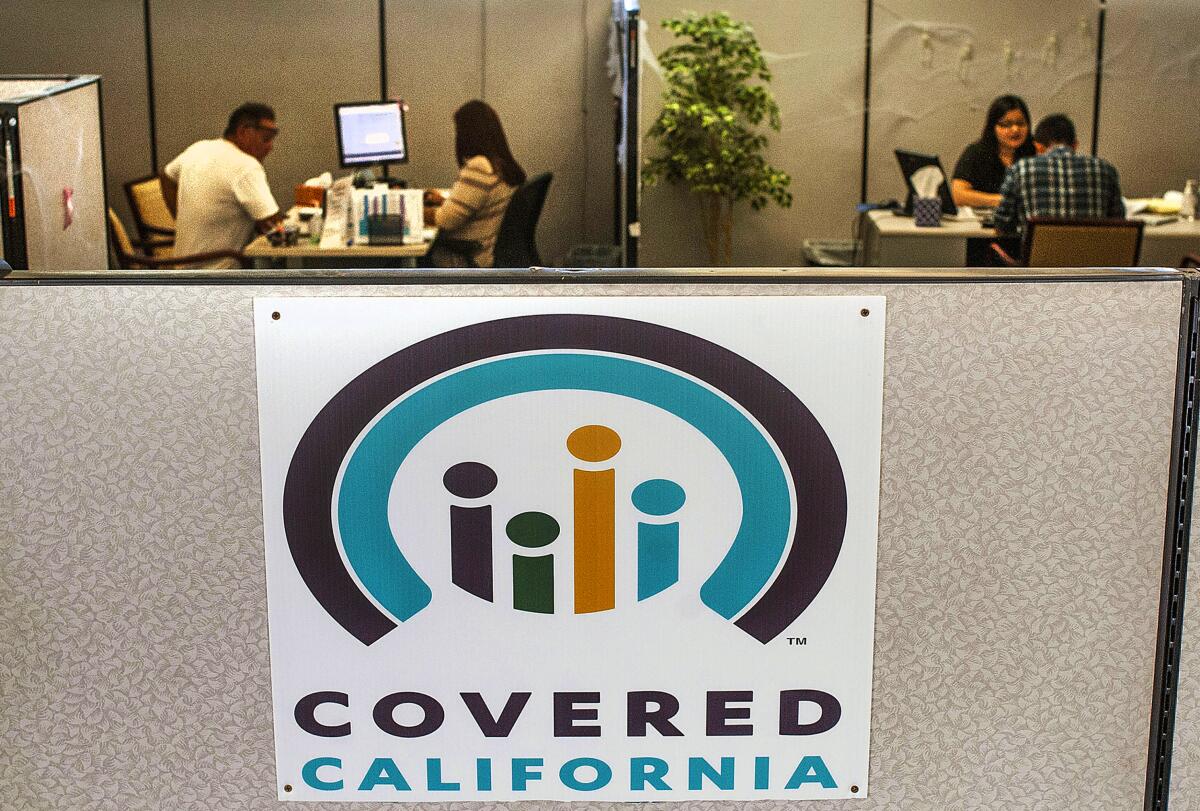Covered California health insurance premiums to increase 1.8% in 2022

SAN FRANCISCO â Premiums for individual policies on Californiaâs health insurance exchange for the uninsured will go up 1.8% on average next year â a small increase credited to record enrollment and increased competition among health carriers, officials announced Wednesday.
In the last year, nearly 250,000 people purchased insurance through Covered California, bringing its total enrollment to 1.6 million.
More than half of the newly enrolled signed up after April 12, when financial subsidies from President Bidenâs American Rescue Plan became available. The subsidies reduce costs for some people and make health insurance basically free for many others through 2022, said Peter Lee, Covered Californiaâs executive director.
âBy getting more people insured and lowering the costs of coverage, we are creating a virtuous cycle of more people being insured, healthier consumers and lower rates for everyone,â Lee said.
The federal Affordable Care Act, passed in 2010, created health insurance marketplaces for some consumers to purchase individual insurance plans with the help of federal subsidies. Most states let the federal government run their marketplaces for them but California runs its own more expansive program.
Covered California premiums average about $830 a month for an individual in 2021. But after subsidies from the Affordable Care Act and the American Rescue Plan, the average consumer pays less than $100 a month. About 700,000 consumers currently pay only $1, Lee said.
Low-income Californians 50 and older will be eligible for healthcare regardless of immigration status under a law extending benefits to 235,000 residents in the country illegally.
âCalifornia is continuing to make significant progress towards covering everyone in our state, and a key part of that is to make sure folks can take advantage of the federal support through the American Rescue Plan,â Gov. Gavin Newsom said in a statement.
In California, premiums increased an average of 8.5% per year from 2015 through 2019. Since then, the Democratic-controlled Legislature and governor have passed laws aimed at attracting healthier people to buy coverage, including offering subsidies and taxing those who refuse to buy health insurance. That helps spread costs among more consumers, keeping premiums lower for everybody.
The 1.8% increase for 2022 is higher than the 0.6% for this year and the 0.8% for 2020 but itâs still much lower than the average 6% increase in healthcare costs, Lee said.
âThe fact that the premiums went up a third of what it is going up through the employer coverage in 2022 is really very good news,â he said.
More competition among healthcare providers has also contributed to lower rates, Lee said. There are now 12 companies in the exchange, giving most consumers at least four choices of providers.
âOver 80% of Californians can now choose four or more different carriers so that means that the consumer is really in the driverâs seat,â Lee said.
The rates announced Wednesday still must be approved by state regulators. The overall rate increase is a statewide average. What each consumer will actually pay depends on where they live and which insurance plan they purchase.
According to Covered California, about 2.7 million Californians lack health insurance through their work or family, and about 1.2 million of them are either eligible for subsidies to help pay their monthly premiums or qualify for government-funded insurance through Medi-Cal.
On Tuesday, Newsom signed a law allowing Californians who are at least age 50 and living in the country without permission to qualify for state healthcare coverage. It is expected to apply to about 235,000 people.
The legislation to expand Medi-Cal coverage to low-income adults regardless of immigration status builds upon proposals pushed by Democrats to extend the stateâs version of federal Medicaid to children in 2016 and to adults younger than 26 in 2020.
More to Read
Inside the business of entertainment
The Wide Shot brings you news, analysis and insights on everything from streaming wars to production â and what it all means for the future.
You may occasionally receive promotional content from the Los Angeles Times.











